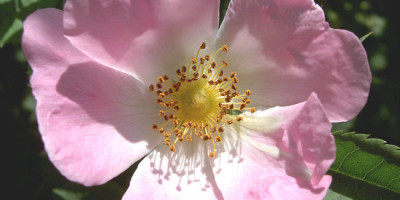Orto botanico Pellegrini-Ansaldi Pian della Fioba (MS)
Le peculiarità naturalistiche qui presenti hanno spinto fin dai tempi più remoti numerosi studiosi, in gran parte botanici, ma anche zoologi e geologi, all’esplorazione di queste montagne. I primi riferimenti botanici alla regione apuana si trovano nelle pubblicazioni di ANGUILLARA (1561) e di LOBEL e PENA (1570), oltre che in diversi manoscritti e nell’erbario di ALDROVANDI, dove si narra di un’escursione del 1553 (SOLDANO, 2004). Successivamente si rinvengono notizie botaniche sulle Alpi Apuane in BOCCONE (1697); nel secolo successivo si registra un crescente interesse nei lavori di VITMAN (1773) e di TARGIONI-TOZZETTI (1777).
La conoscenza floristica delle Apuane si accresce notevolmente nell’Ottocento, quando vengono prodotti diversi studi sulla flora apuana (SAVI, 1804, 1808-1825; BERTOLONI, 1819, 1832 e SIMI, 1851) e descritte nuove specie di piante esclusive del territorio apuano (VIVIANI, 1804, 1808; SAVI, 1804; BERTOLONI, 1819, 1832; SOMMIER, 1894). In un’opera unica seguita da due supplementi, vengono sintetizzate le conoscenze complete della flora toscana (CARUEL, 1860, 1866, 1870). Successivamente PELLEGRINI (1942) fornisce dati assai dettagliati per la parte del territorio che rientra nella provincia di Massa-Carrara. Nella seconda metà del XX secolo si moltiplicano vertiginosamente gli studi dedicati alla regione apuana in vari filoni: studi floristici, studi vegetazionali, studi su specie minacciate, ricerche sui pollini fossili, studi citotassonomici e biosistematici. Di fondamentale importanza dal punto di vista floristico sono certamente i tre volumi del Prodromo alla Flora della Regione Apuana (FERRARINI & MARCHETTI, 1994; FERRARINI et al., 1997; FERRARINI, 2001), ultimo lavoro globale sulla flora apuana.





